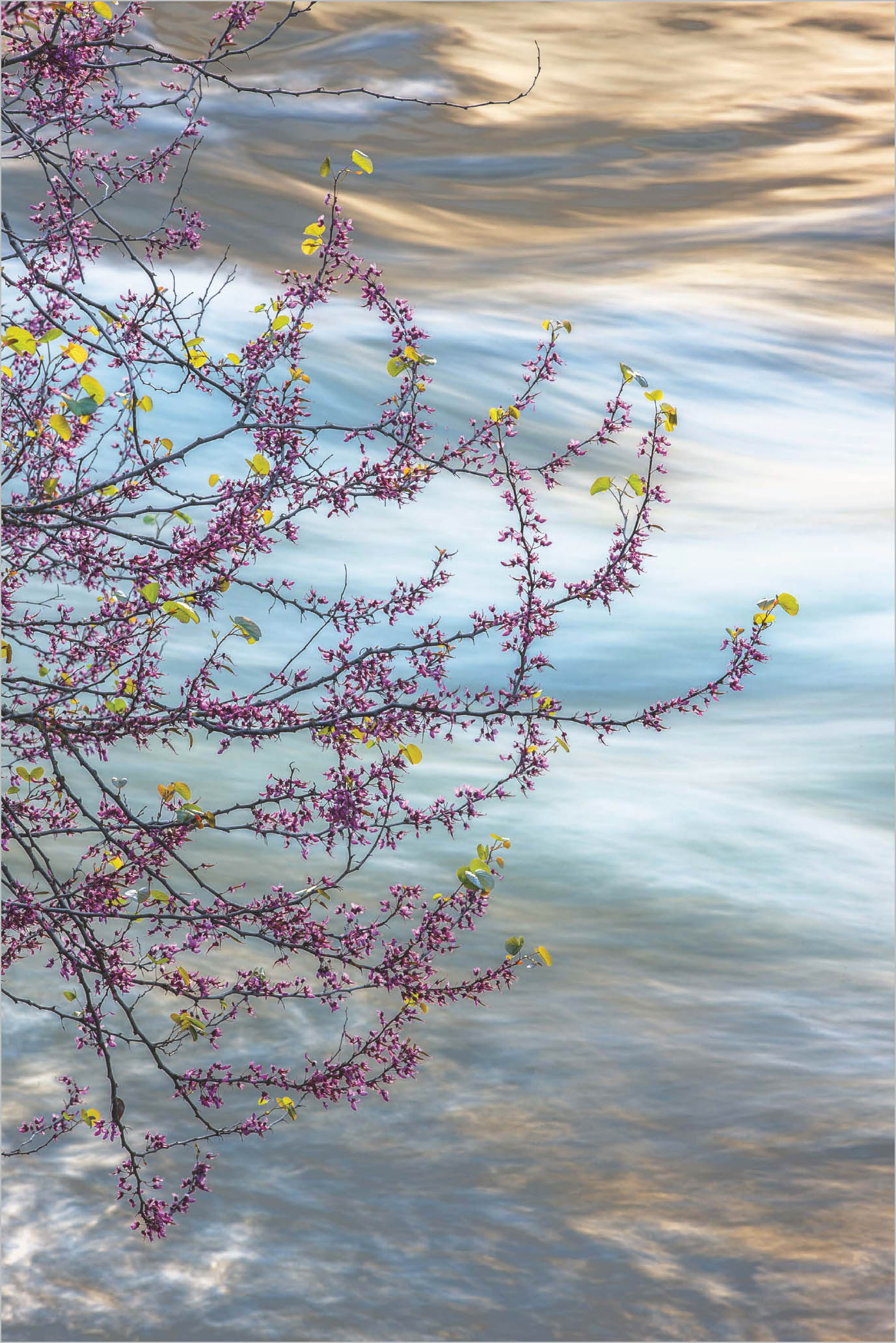ON THE WAY HOME
ALWAYS ON THE LOOKOUT
One summer my family and I camped at Lake Tahoe’s Emerald Bay for a couple of days. Each sunrise, I woke up to photograph dawn light over the bay and Eagle Falls. Each dawn was a gift I enjoyed in reverent solitude while my family slept in. The photographs, as reviewed on my laptop, seemed just okay. That was fine since I was on vacation, so my expectations were not too high.
On the way home, driving at 65 mph on the highway, I spotted a little waterfall. With midday light shining down across the steep cliff, the light glanced across the water spray while the background was in deep shadow. I photographed intensely for about thirty minutes, piled the gang back into the car, and headed off.
When I returned home, I started going through the images from the trip. I was pleased with my Tahoe images, but I didn’t see any stunning work, as I already suspected. When I started looking at the images made at a little wayside waterfall, I became very intrigued with the results.
I found that in some of the images, I had isolated individual sprays that looked more like rays of light than water. The different shutter speeds I tried, mostly in the 1/20–1/80 second range, defined the length of the “rays.” As I worked on the images in Photoshop, magnified views showed the lines of water even more dramatically. The lines etched out designs of excited energy. The sunlight had even worked its prismatic magic, giving color to the spray.
Working with one exposure, I cropped out three images to make a triptych. I wish I could have seen what I had been recording more clearly as I photographed. I would have used a longer lens (400mm or more, instead of 200mm) to isolate these patterns so I wouldn’t have had to crop. Fortunately, the subject matter and the good resolution of my camera made it possible to enlarge the cropped areas of a single frame without significant loss of detail.
My triptych series is an exciting body of work for me. The idea is to present a set of images that communicates the beauty of subtle changes in nature’s patterns and processes better than a single image. The sets are composed to show a subject in the process of changing, or to explore the variations of pattern or design of a subject. This can be seen with three frames exposed within a close sequence of time, or by seeing a subject from alternate perspectives (like simply turning a shell or rock), or seen in changing light.
My photography has always been about sharing my explorations in the landscape with the hope that the viewer will see, feel, and enjoy the subject more deeply. Much of the joy in exploring nature is in its variation and its change. These triptychs most beautifully reveal for me that there is no real peak moment, but rather a continuity of moments, and that there are subtleties in nature that only a camera can reveal.
Since much of nature’s power and beauty is tied to its continual and infinite variation, its story cannot be fully told without reference to time and pattern. As photographers, we spend a great deal of energy featuring and promoting that one special decisive moment when we clicked the shutter. In a normal mode of operation, we wait and watch until a confluence of light and compositional elements inspires us to expose the image. After the fact, we sit in front of a lightbox or computer screen looking for that one frame out of many that “says it all.” The results of our efforts often lead us to find that “most perfect” image. These special frames deservedly end up as prints on our walls.
Some subjects, however, can benefit from a more fluid treatment. The full beauty of a sunset is difficult to convey in one image. Like in a time-lapse video, with crimson clouds fading to dark, these triptychs can unveil the nuance and subtlety of change or design that we rarely focus on in still photography.
I have created triptychs in several different ways. The Bridalveil Fall Triptych is an excerpt of the same scene: three images all taken at the same time. Exposing the same composition three times forms another type of triptych, and if the subject is moving, the subtle changes can be seen. Each frame of the triptych could be exposed within one second, such as with the Manzanita Lake Triptych, or over the course of hours or days. Some triptychs I have made are simply photographed as a panoramic image made of three exposures. The possibilities are unlimited.
My triptych images are an effort to find a fresh way to see the landscape and to expand my creative options beyond the traditional monocular perspective. I am not sure if the resulting images will be enduring, but I do know that pushing myself out of my comfort zone keeps me excited about making new photographs.
Redbud | Merced River Canyon, California | 2012
